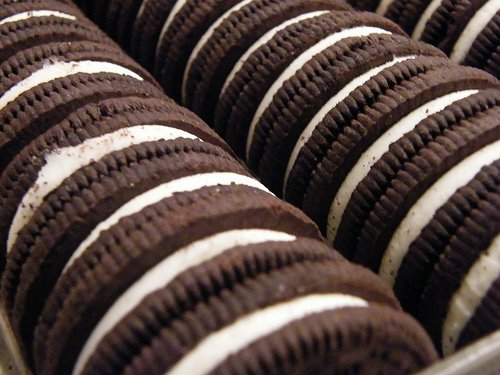(Susanne Posel) Professors and students at Connecticut College (CC) released a study stating that pleasure centers in the brain of lab rats displayed the same neurological reactions to Oreo cookies as is observed with the addictive nature of high-fat and high-sugar foods.
The findings of this study will be presented next month at the Society for Neuroscience (SFC) conference in California.
Shockingly, those pleasure centers in the brain fired off with more intensity when the rats were given Oreos than drugs.
Joseph Schroeder, professor of neuroscience at CC said: “Our research supports the theory that high-fat/high-sugar foods stimulate the brain in the same way that drugs do. It may explain why some people can’t resist these foods despite the fact that they know they are bad for them.”
The basis for this study came from a student who questioned the prevalence of high-fat foods in low-income households and whether this is directly connected to the obesity epidemic in America.
Most notably, the rats voraciously ate the cookies by “breaking it open and eating the middle first.”
Oreos, like other chemical – laden processed foods, fires up part of the brain that released opiatelike compounds that are closely related to morphine. This shows that these foods are by nature, addictive.
Paul van der Velpen, managing director of internal administration for the GGD in Amsterdam, said that “sugar is actually a form of addiction. It’s just as hard to get as smoking.”
Velpen explains that diets do not work because sugar is addictive and therapy is needed for overweight persons to shed their excess body fat.
Velpen blames the food industry for making “use of this mechanism” by making “food products sweeter.”
This leads to “poor nutrition”, disturbed the “balance in our body” and causes ‘addiction”.
As a member of the Dutch government, Velpen suggests that stringent prohibition be instilled and “the use of sugar . . . be discouraged” by the rule of law.
Velpen states that “users should be made aware” with labels, much like those on the outside of a pack of cigarettes.
Installing a “sugar tax” on the consumption of processed sugars would be mandated of the Dutch people while “health insurers would have to finance their addiction therapy obese clients.”
Velpen warns: “This may seem exaggerated and far-fetched, but sugar is the most dangerous drug of the times and can still be easily acquired everywhere.”
Earlier this year, Ivan de Araujo, professor and lead author of the study out of Yale University School of Medicine (YUSM), discovered that artificial sweeteners cause the brain to crave more high-caloric alternatives.
Araujo said: “The consumption of high-calorie beverages is a major contributor to weight gain and obesity, even after the introduction of artificial sweeteners to the market. We believe that the discovery is important because it shows how physiological states may impact on our choices between sugars and sweeteners. Specifically, it implies that humans frequently ingesting low-calorie sweet products in a state of hunger or exhaustion may be more likely to ‘relapse’ and choose high calorie alternatives in the future. The results suggest that a ‘happy medium’ could be a solution; combining sweeteners with minimal amounts of sugar so that energy metabolism doesn’t drop, while caloric intake is kept to a minimum.”
Araujo’s team found that eating foods with artificial sweeteners causes the body to become hungry and increase the desire for more sugar later.
Dopamine is the chemical that sends messages to the brain and controls behavior, emotional response and pleasure. Dopamine plays an influential role in addiction as well.
By monitoring mice, researchers identified specific brain circuits that fired up as the mice were fed sugar, than artificial sweeteners.
Araujo said : “According to the data, when we apply substances that interfere with a critical step of the ‘sugar-to-energy pathway’, the interest of the animals in consuming artificial sweetener decreases significantly, along with important reductions in brain dopamine levels.”
When the “hungry mice – who thus have low sugar levels – are given a choice between artificial sweeteners and sugars, they are more likely to completely switch their preferences towards sugars even if the artificial sweetener is much sweeter than the sugar solution.”
Article appears first on Occupy Corporatism
